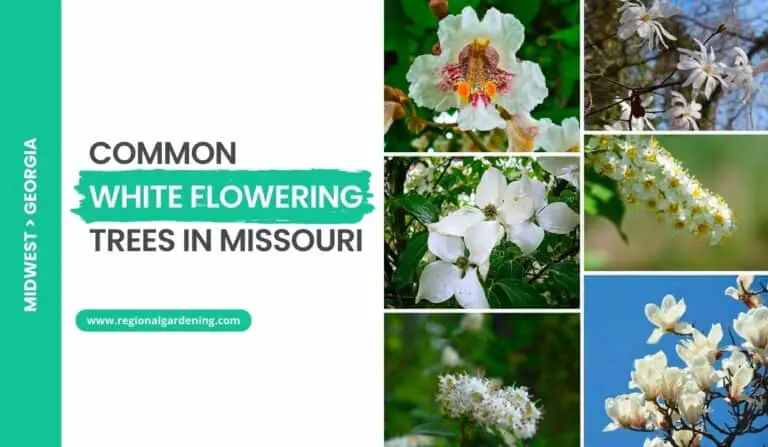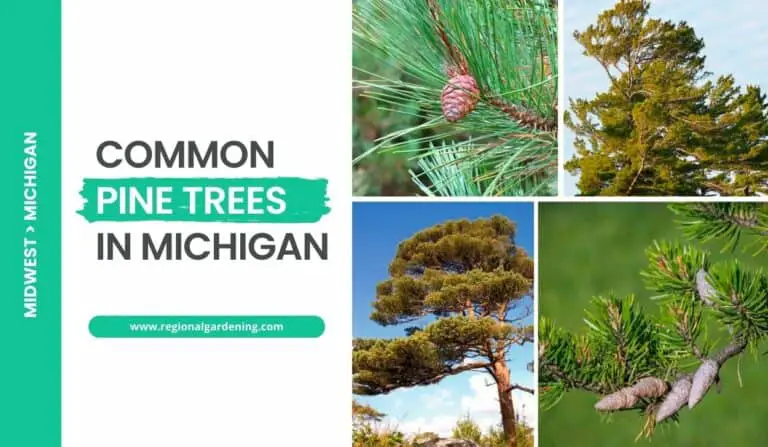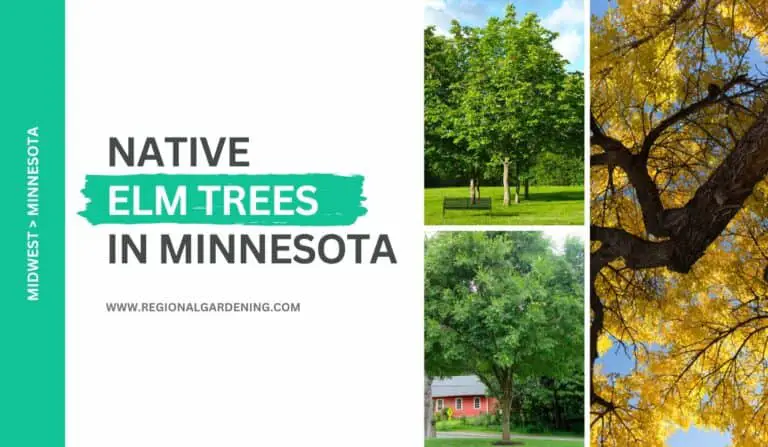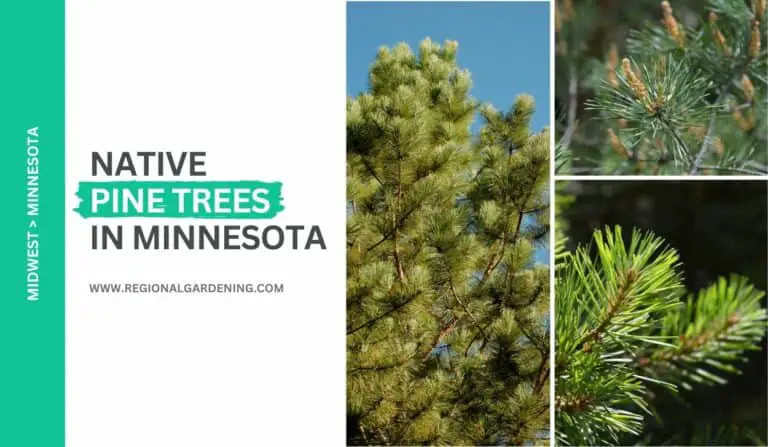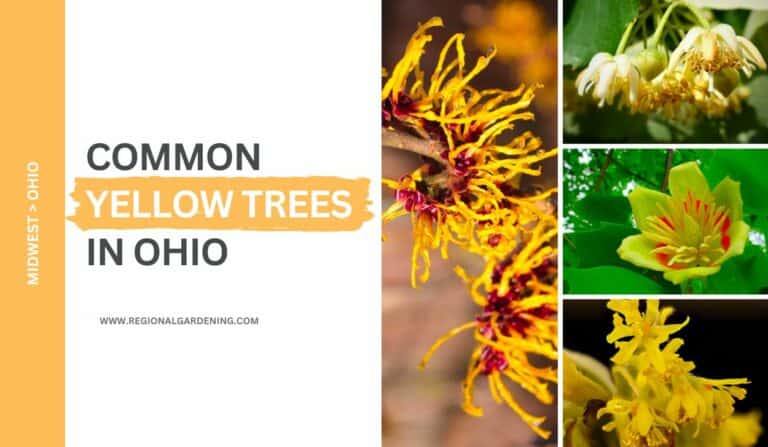7 Types Of Maple Trees In Michigan (Photos & Identification)
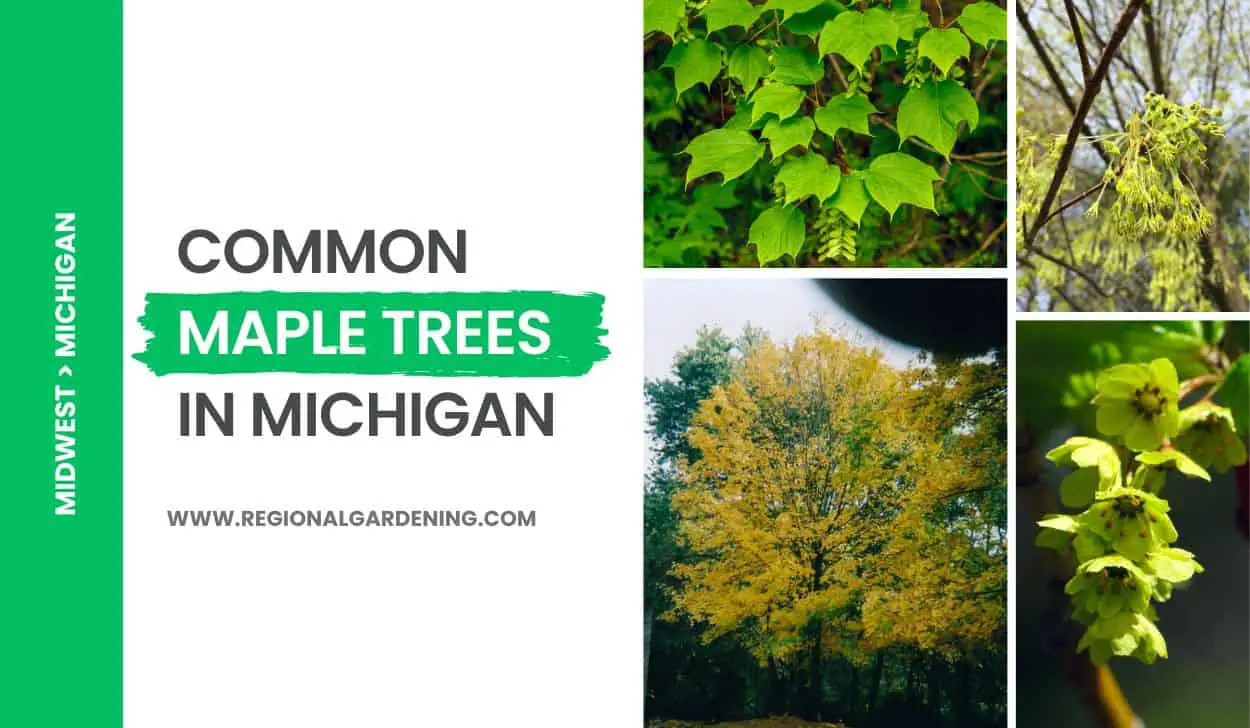
Michigan residents are likely familiar with the sight of Sugar Maple trees lining the roads and adorning backyards. The state is known for its stunning natural beauty, and one of the most iconic elements of its landscape is the maple tree.
While Sugar Maple trees are common in the state, they are only one of many varieties of maple trees in Michigan. In fact, more than seven other maple trees can be found across the region, each with its own unique characteristics. Out of these seven species, five are native to the state.
In this article, we’ll look at each of these trees and provide detailed descriptions of their leaves, bark, flowers, and fruit. We also go over details like native range and habitats to help you identify the species much easier.
So, let’s get started.
1. Boxelder Maple
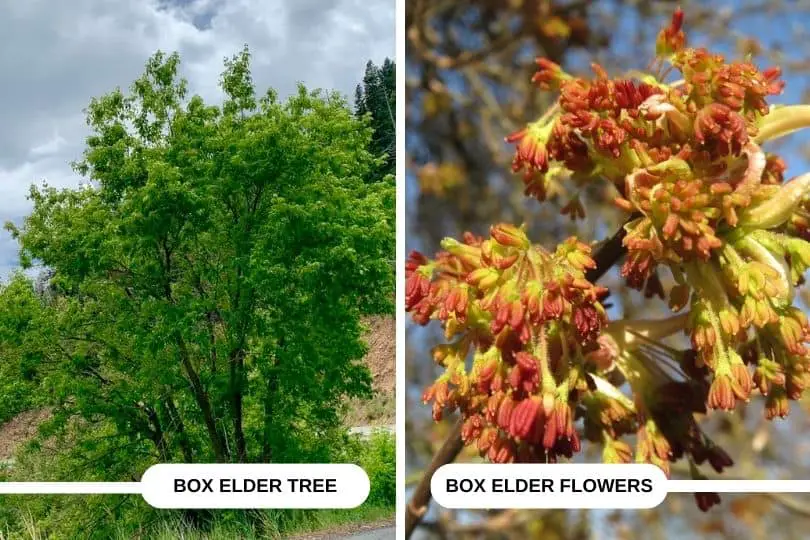
- Common Name: Boxelder
- Scientific Name: Acer negundo
- Mature Height: 30-50 feet (9-15 meters)
- Native/Non-Native: Native
- Flowers: Tiny reddish flower
- Fall Color: Yellow
One of the most commonly found native maple trees in Michigan, Boxelder is a medium-sized tree found in wet areas along streams, lakes, and flooded areas in the Lower Peninsula’s southern half. The trunk of this tree is frequently divided and crooked, and its crown is broad and irregular.
Boxelder leaves are compound, which means that each leaf is made up of 3-5 smaller leaflets. Each leaflet is typically 2-4 inches long, with three lobes and an irregular, toothed margin. The leaves are a pale green color. These leaves turn yellow in the autumn.
Boxelder is a native tree with a lifespan of 50-60 years. It is frequently referred to as a “trash tree,” but it produces a large number of seeds that remain on the tree throughout the winter and provide a valuable food source for wildlife.
The tree can be tapped in the spring to yield sap that can be boiled down to make maple syrup. Because Boxelder sap contains less sugar than other maple saps, it takes more sap to make a comparable syrup.
Tiny reddish flowers bloom on a 1-3 inch long stalk in the spring. These flowers eventually develop into a pair of green-winged seeds known as samaras, which can grow to be 1-2 inches long and brown.
Boxelder bugs, which are harmless beetles, are frequently found on Boxelder trees. The larvae of these beetles eat the tree’s leaves, but they do not cause much damage. This tree is also known as Manitoba Maple or Ash-leaved Maple.
2. Red maple

- Common Name: Red Maple
- Scientific Name: Acer rubrum
- Mature Height: 40-60 feet (12-18 meters)
- Native/Non-Native: Native
- Flowers: Tiny red hanging flower
- Fall Color: Red to orange
Red maple trees are among the most common types of maple trees in Michigan. They can reach heights of 40-60 feet and have a single trunk with a narrow, dense crown.
The leaves of red maple trees are lobed, 3-4 inches long, and have 3-5 shallow notches between the lobes. The leaves have a double-toothed margin and are light green. Red maples are easily identified by their red leaf stalks.
Red maples turn red or orange in the fall, making them a sight to behold. These trees are native to Michigan and have a life expectancy of 75-100 years. They prefer wet to moist soils and can often be found growing along swamps or in depressions that hold water.
Red Maples have tiny red flowers that dangle from a red stalk. They are about 14 inches wide and grow in 1-3 inch wide clusters. These flowers, which bloom in the early spring, give the tree its common name.
Because of their beauty, red maples are frequently planted as ornamental trees. They are also drought-tolerant, which makes them an excellent choice for Michigan’s climate. Other popular names for this tree include Swamp Maple and Water Maple.
3. Silver maple
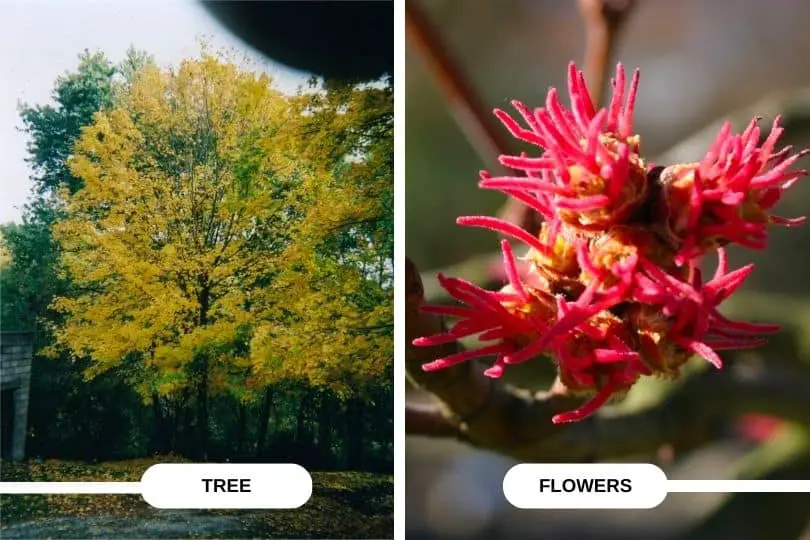
- Common Name: Silver Maple
- Scientific Name: Acer saccharinum
- Mature Height: 75-100 feet (23-30.5 meters)
- Native/Non-Native: Native; 100-125 years
- Flowers: Tiny red dangling flower
- Fall Color: Yellow to orange
The Silver Maple is a tall tree with a single trunk and ascending branches that spread out into an open crown that can reach heights of 75 to 100 feet.
Its leaves are lobed and attached to the branches in opposite directions, with a dull green upper surface and a silvery white lower surface. The leaves are divided into 5 to 7 lobes with pointed tips, deep notches, and a double-toothed margin. These leaves turn yellow to orange in the fall and that makes this tree a delight to the eyes.
Silver maple is one of the most commonly seen native maple trees in Michigan. It grows well in wet to moist soils, frequently in pure stands in floodplains. When young, its bark is gray and smooth, but as it ages, it becomes furrowed with long scaly strips that peel and curl at the ends.
The Silver Maple produces tiny red dangling flowers on a 1 to 2-inch-long stalk in the spring. It also produces a pair of green-winged seeds known as samaras, which turn brown and measure 1 to 2 12 inches in length.
The Silver Maple is one of the first trees to bloom in the spring, and its flowers are frequently misidentified as buds. It produces a lot of seeds and is often found growing in bottomlands or floodplains along rivers, where it is the dominant tree.
The Silver Maple, also known as Silver-leaf Maple or Soft Maple, gets its common name from the silvery appearance of its leaves and its brittle branches, which frequently break off in windstorms. However, the wood of the Silver Maple is very hard with a tight grain despite the name soft maple.
4. Striped Maple
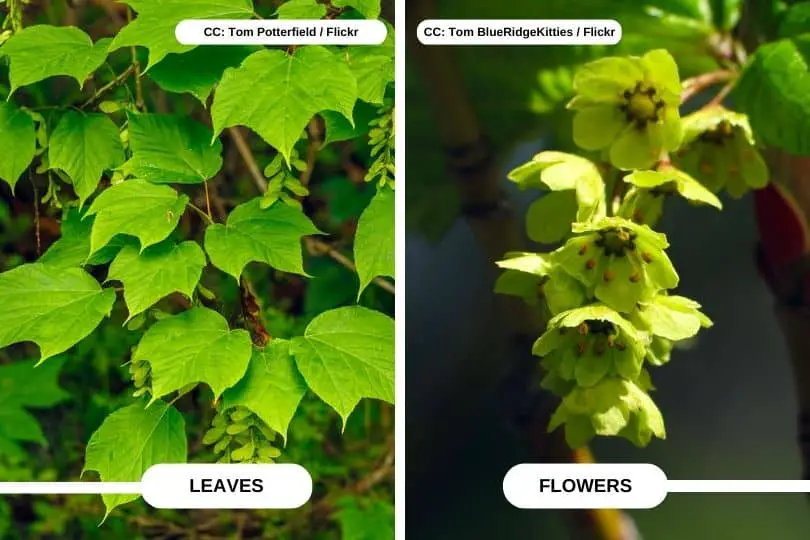
- Common Name: Striped Maple
- Scientific Name: Acer pensylvanicum
- Mature Height: 20-35 feet (6-11m)
- Native/Non Native: Native
- Flowers: Small, yellow-green flowers
- Fall Color: Yellow
The Striped Maple tree is a deciduous tree native to North America’s eastern regions. It can reach 35 feet in height and has a trunk diameter of about 12 inches. The Striped Maple’s crown is typically oval-shaped, and it forms a dense canopy that provides excellent shade during the summer months.
Striped Maple leaves are simple, five-lobed, and arranged opposite each other on the stems. The leaves have distinct green stripes that run along the veins to form a distinctive pattern. During autumn, the leaves change color to a bright yellow.
When young, the Striped Maple’s bark is smooth and light gray, but as the tree grows older, it develops vertical stripes that run along the trunk. These dark greenish-gray stripes form a distinct pattern that allows you to identify the tree even from a distance.
In the spring, the Striped Maple produces clusters of small yellow-green flowers. The flowers aren’t particularly attractive, but they do produce sweet nectar that attracts bees and other pollinators.
The Striped Maple usually grows in moist, shady places, like the understory of deciduous forests in the northeastern United States and southeastern Canada. Despite being found throughout the state, striped maples are the least common maple trees in Michigan.
5. Sugar Maple
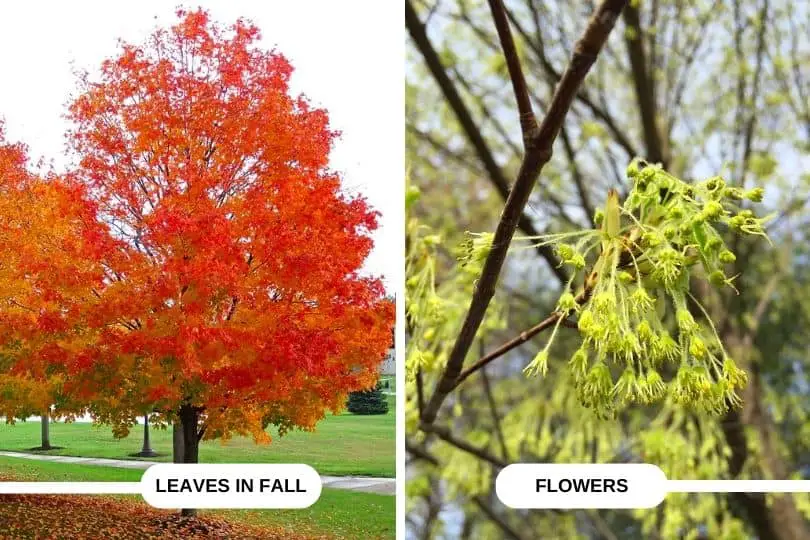
- Common Name: Sugar Maple
- Scientific Name: Acer saccharum
- Mature Height: 50-70 feet (15-21 meters)
- Native/Non-Native: Native
- Flowers: Greenish-yellow flower
- Fall Color: Orange to red
The Sugar Maple (Acer saccharum) is a tall deciduous tree that can reach heights of 50 to 70 feet (15 to 21 meters). It boasts a single trunk and ascending branches, with a narrow, round to oval crown.
The lobed leaves of the Sugar Maple grow up to 3-5 inches (7.5-12.5 cm) in length, are oppositely attached to the tree, have five lobes (sometimes three), and have pointed tips with few irregular teeth and wavy margins. The upper side of the leaves is yellowish green, while the undersides are lighter in color. The Sugar Maple’s leaves turn a vibrant orange or red in the autumn.
The bark of the Sugar Maple is a grayish hue with narrow furrows and irregular ridges that can appear scaly.
During the spring, the tree produces greenish-yellow flowers that dangle from a 1-2 inch (2.5-5 cm) long stalk, as well as pairs of green-winged seeds (samara) that can reach lengths of 34 to 112 inches (2 to 4 cm) after turning from green to tan.
Sugar Maple is a notable species because it produces maple syrup and maple sugar. A single gallon of syrup requires approximately 40 gallons (152 L) of sap. Interestingly, during the spring, any breaks in the tree’s twig, branch, or trunk produce sugary water that attracts birds, bugs, and mammals that drink the sap.
Additionally, Sugar Maple leaves decompose quickly and make an excellent natural and organic fertilizer. Its wood is also extremely hard, making it popular for furniture, flooring, and cabinets. Sugar Maple trees are widely planted in yards, parks, and along roads because of their attractiveness and popularity.
6. Amur Maple
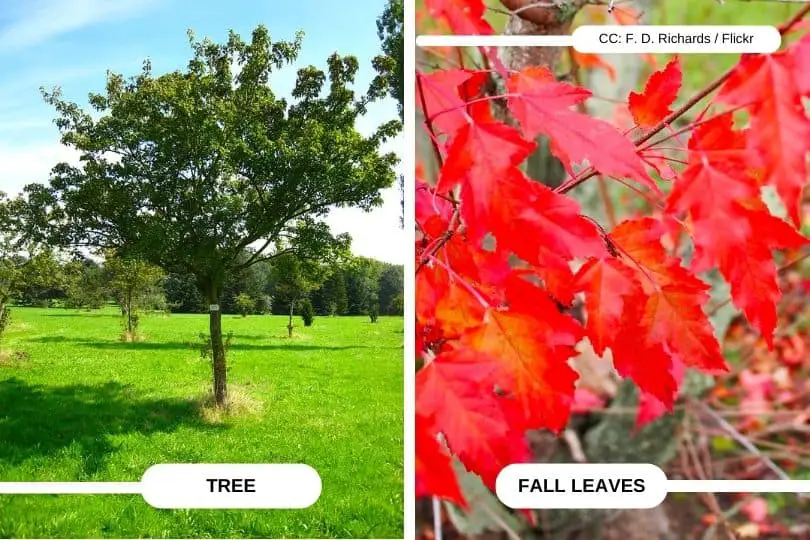
- Common Name: Amur Maple
- Scientific Name: Acer ginnala
- Mature Height: 15-20 feet (4.5-6 meters)
- Native/Non-Native: Non-native
- Flowers: Small green flower
- Fall Color: Red to orange
If you’re looking for a small maple variety for your yard or garden, the Amur Maple is a great choice! This is one of the most commonly seen non-native maple trees in Michigan.
This tree can also be a shrub, and it is frequently multi-stemmed, with compact lower branches and an irregular crown. The Amur Maple’s leaves are arrowhead-shaped and lobed with coarse teeth. They are about 2-4 inches long and have a glossy green color, with a bright red leafstalk. The Amur Maple turns a bright and showy red or orange color in the fall, making it a great addition to any landscape.
The Amur Maple is a non-native tree from eastern Asia that was introduced to the United States. It is a hardy shade-tolerant plant that prefers well-drained soils and shade.
It also has small green flowers about 12 inches wide that grow in drooping clusters about 1-2 inches wide. The fruit of the tree is a pair of red-tinged winged seeds known as samaras. Because they spin as they fall to the ground, samaras turn bright red and are often referred to as “helicopters.”
It can be found all over Michigan and is frequently planted in parks and yards. The Amur Maple’s genus name, Acer, means “sharp” in Latin, and refers to the tree’s pointed lobes.
It is also known as the Siberian Maple and is thought to have originated in the Amur River, which runs through China and Russia.
7. Norway Maple
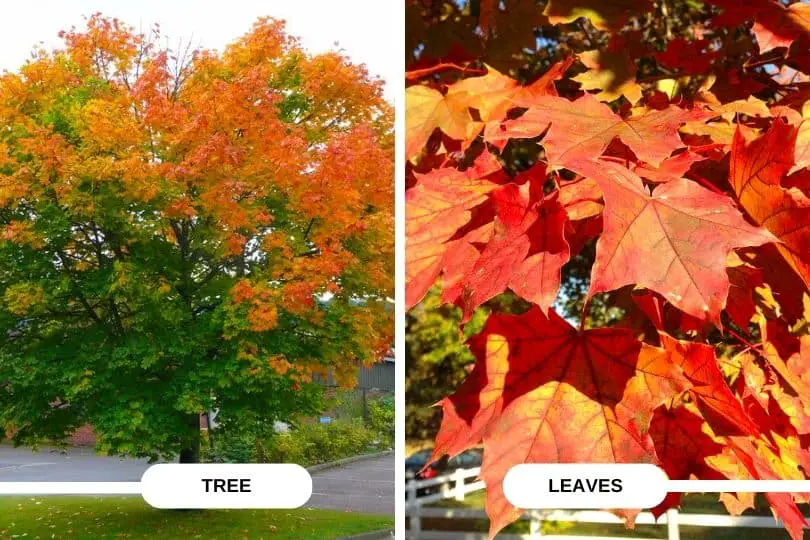
- Common Name: Norway Maple
- Scientific Name: Acer platanoides
- Mature Height: 40-60 feet (12-18 meters)
- Native/Non-Native: Non-native
- Flowers: Large green flower
- Fall Color: Yellow, orange
Norway maples are another common type of non-native maple tree in Michigan. The tree features a single straight trunk and a dense round crown, which makes it a very attractive and symmetrical tree.
Norway Maple leaves are lobed and 5-7 inches long, with 5-7 shallow notches and a wavy margin. When cut, they exude a milky sap and are shiny dark green above and light green below. The Norway Maple turns yellow or orange in the fall, making it an excellent addition to any autumn landscape.
The tree also produces large green flowers that range in size from 12 to 34 inches and grow on a 1-2 inch long green stalk. Its fruit is a pair of winged seeds, also known as samaras, that are about 1-2 inches long and widely spread.
The Norway Maple is a non-native tree that arrived in the United States from Europe between 100 and 125 years ago. It grows best in well-drained, rich soils and is frequently planted along streets and in parks.
This tree variety is well-known for being one of the most diseases- and insect-resistant maple species, making it a popular choice. However, it is also regarded as a potential pest species that may outperform native maples.
The tree is known as Norway Maple because it was introduced from Norway, even though it is native to central and eastern Europe.
Maple Trees In Michigan – Frequently Asked Questions (FAQs)
Let’s discuss some of the most frequent queries concerning maple trees in Michigan. These questions were taken from gardening-related internet forums and discussions.
Do maple trees grow in Michigan?
Maple trees grow well in Michigan. There are more than seven different types of maple trees that can be found throughout the state, including both native and non-native species. These varieties include Sugar Maple, Norway Maple, Boxelder Maple, Red Maple, Silver Maple, etc.
Where can you find the most maple trees in Michigan?
Maple trees are not just confined to a specific area and can be found throughout the state. However, different species are dominated in different regions. For example, Black Maple is more prominent in the southern half of the Lower Peninsulas (LP).
Similar Articles
- Native Birch Trees In Michigan
- Native Elm Trees In Michigan
- Common Nut Trees In Michigan
- Common White Bark Trees In Michigan
- Common Ash Trees In Michigan
- Common Willow Trees In Michigan
- Common Spruce Trees In Michigan
- Red Flowering Trees In Michigan
- Common Purple Trees In Michigan
- Yellow Flowering Trees In Michigan
- White Flowering Trees In Michigan
- Common Hickory Trees In Michigan
- Common Oak Trees In Michigan
Maple Trees In Michigan – Sources
The Regional Gardening team makes sure that the information in our articles is accurate by only using sources that are known to be trustworthy. Some of these sources are peer-reviewed journals from government agencies, well-known universities, and scientific research organizations.
- Book – Michigan Trees A Guide to the Trees of the Great Lakes Region
- Book – Field Manual of Michigan Flora
- Book – Trees Of Michigan Field Guide
- Michigan’s Forests, Department of Natural Resources
- Michigan Botanical Society
- LSA Herbarium, University Of Michigan
- Department Of Forestry, Michigan State University
- Michigan Nature Association


